Ex-Calibers
The biographies of six guns that together tell a tale of today's American West
By James Rocchi
DANGER AND DISCOVERY were integral to this nation's birth. The West was a frontier in need of taming. So people came--people prepared to tame it. By force, if necessary. You could not tell a history of the West without firearms. From San Jose's Winchester House to the Ambassador Hotel in Los Angeles. From the Alamo of the distant past to the most recent road-rage shooting. Films: Dirty Harry pulls his piece on the Boardwalk. TV shows. True-crime books. Fiction. And reality.
Today, there are more than 223 million firearms in the United States--76 million are handguns.
Between Sept. 13 and Oct. 2, six events occurred that led the Santa Cruz City Police and the Santa Cruz County Sheriff's Department to confiscate 12 of those guns.
SOMEONE WALKING along the shoreline late in the morning with a metal detector finds a buried sock. The sock contains a loaded .22 caliber Jennings semiautomatic pistol. Police trace the gun's registration as part of standard operating procedure. If it had been determined that the registered owner was not someone with a criminal record or a convicted felon, or that the weapon had been stolen, the SCPD would have contacted the owner. However, it turns out the registered owner is a convicted felon and does not live in the area.
"He was from somewhere around Modesto," Sgt. Rich Seiley explains when I ask him for further clarification--the police records had been thrown out in the passage of time. The registered owner cannot be found.
The SCPD's summary of this event then adds: "Weapon will be destroyed." Sgt. Seiley explains how the SCPD disposes of firearms: "We used to just dump 'em, but we can't do that anymore. We dismantle them and then send them to a place where they get melted down."
It's impossible to get a clear picture of whether its owner disposed of the Jennings because it was useless (low-powered, undesired) or entirely too useful (and thereby too hot to handle and too risky to keep). It's also impossible to know how many guns are abandoned each year in America, how many guns have been hidden or hastily thrown away or forgotten about, shoved between the folds of old clothes in the attic.
However, it's easy to determine that more will take the place of those that are lost.
A 1994 statistic from the Bureau of Alcohol, Tobacco, and Firearms states that "a new handgun is produced in the United States every 12 seconds." The Centers for Disease Control and Prevention reported in 1993 that a new gun is made in America every six seconds. Details, details. It's not as if throwing away a .22 caliber Jennings represents losing an especially rare or valuable artifact--the Blue Book lists the manufacturer's suggested retail at $79, mint condition.
In the Santa Cruz Library's reference section, the books on firearms sit side by side with volumes on do-it-yourself repair and books on typography. However, the Blue Book makes for a different kind of reading experience. An editorial at the beginning by the book's author and publisher, S.P. Fjestad, makes an observation about an upswing in the sale of semiautomatic pistols and rifles upon the creation of proposed gun legislation: "Ironically, Slick Willy will go down in the record books as the best firearms salesman ever to leave Arkansas."
Natural Bridges is a beautiful place. People go there to see butterflies, maybe to lie on the sand with a good book. Or they go tide-pooling, poking at starfish with their kids. Somebody had a metal detector and discovered that the "Pack Your Trash" campaign isn't working as well as it might. According to the Santa Cruz County Sentinel, Saturday was clear after morning clouds, with temperatures in the high 60s. It was probably a nice day for a walk.
7pm, Saturday, Sept. 9
SANTA CRUZ COUNTY sheriffs take Harry Reinert and Theresa Patterson into custody. They are transients, and the space in the property report that records "Offense" reads 11377/78/79--the section of the Health and Safety Code that deals with the possession, intent to sell and transportation of various illegal substances. In this case, it's methamphetamine.
The report says Reinert and Patterson have 11 separate bags with various quantities of the drug on them, as well as a Walther LP Model 53 handgun and ammunition. James Bond always used a Walther in the books.
These people would not be confused with James Bond.
Reinert and Patterson have a scale, a few crack pipes and less than $200 on them.
Methamphetamine is a real cottage industry in California. However, it's a double-edged drug for the dealer. Meth can be manufactured locally, with a small setup. Unlike cocaine or marijuana, it doesn't require transport in bulk or across national borders--it can be made in a garage-size lab. However, those labs produce explosive fumes that can make that garage go up and out real fast, or spill enough acid and toxic fumes to boil the flesh off bones or blow out lungs.
Methamphetamine induces acceleration and rage. It is to ordinary uppers what crack is to cocaine--concentrated, intense and cheap. You would not want to have to deal with someone who was on crystal meth if they were angry--armed or not.
Paranoid, revved-up people tend to not have the best grasp of responsible gun ownership. The evidence report notes that the evening was clear early that Saturday night.
A MAN COMES HOME to find his house has been robbed. There was no breaking required for the entering--someone stood on a garbage can to get to a small deck, a second-story door was opened, and that was that. A key to the garage has been taken from its hiding place inside the home. The only thing taken from the garage is a tattoo kit--needle, inks, case--belonging to the man's son.
From the house, four items are reported missing from under the victim's bed--a Ruger .357 handgun (with 30 rounds of ammo), a Ruger brand .22 carbine, a Mauser Model 98 rifle rechambered for 30-06 shells with a Weaver scope, and a Harrington and Richardson 12-gauge shotgun. More than 300,000 firearms are reported stolen to the FBI each year.
An initial report observes that nobody rummaged through closets or pulled out drawers--they knew pretty much what they wanted and where it was. What really happened, when everyone finally figures it out, is a mess. More tiresome than complicated, like untangling the Christmas lights. People trying to cover their own asses, or cover for their pals. Asking if they could maybe try to give the guns back first. People saying they understand their Miranda rights--"You have the right to remain silent, blah blah blah," just like on TV--with the quick flat "Yeah" of someone who's been in trouble before and expects to be in it again.
It all started with one boy--a juvenile, so we'll call him Mike--who made plans with another friend, Jacob. They were going to hold up a dealer for a quarter-pound of marijuana. Such bold measures demand preparation. They had a friend, Paul, who had mentioned in the past that he knew where there were some guns and how to get into the house where they were. Since it was his house, and his dad's guns, it wasn't as if Paul had to do a lot of research.
Mike and Jacob went into the Aptos home and stole a .25 caliber handgun--a missing item not even mentioned in the initial report. They didn't tell Paul. They weren't going to hurt the dealer, just scare him, and then bring the gun back from the robbery and return it to the home they "borrowed" it from. They even left the front door unlocked so they could get in to return the .25 caliber later on.
As it turned out, they never went to rob the dealer, but they did drop by their friend George's house and mentioned that they had taken a gun from Paul's dad--maybe they mentioned that there was a lot more stuff at the house. George went over and made off with the handgun, the two rifles, the shotgun and the tattooing equipment.
On Monday the 22nd, things started making sense. They also got way complicated. The .25 showed up, "recovered" by Mike, who was claiming to have removed it from Joe's place after Joe stole it--no mention of dope robbery plans. The .357 turned up in Jacob's garbage. His mom found it and called the sheriff. People started talking.
Thursday the 25th rolls around and things get more obvious. George, it turns out, is in custody on another matter. A deputy talks to him. He has a fresh tattoo. That couldn't have looked good. George said he gave the guns to a relative of his, Alexander. A deputy talks to Alexander, also sporting a fresh tattoo. Alexander gave the rifles and pistol to a friend of his, Jesus. Jesus and his friend Miguel sold the rifles for $160 to one buyer, and the shotgun to another buyer for $42, even though the asking price was $100.
At some point, it's noted on the evidence report, the shotgun has had its stock ground down to a pistol grip, has had a leather strap custom-fashioned for it and is only 25 inches long--one inch shy of the legal length for shotguns, according to California Penal Code.
The sheriff's deputies ask a lot of the people involved if they're in Watsonville's Northside gang. They all say no. They know some guys who are, but that's it. Everything gets confiscated.
The charges are a fistful of 459s (Burglary), 496s (Theft) and a few charges of receiving stolen property. The chain of events sprang out of a boy, Paul, partying with his friends, stoned, talking about his dad's guns. It required everybody making certain flawed assumptions, everyone following some bad ideas to their illogical conclusions. Like Aptos can be boring, so hey--why not do something rash? Like once your dad drops you off at school, you have plenty of time to catch a bus, play hooky and go do a little burglary. Like thinking that armed robbery is neither difficult nor risky.
It comes down to a few scenes of extremely specific and banal detail: a grand total of $202 quick profit, a startled mom with a piece in the trash, two fresh tattoos and a dope robbery that never happened.
2pm, Sunday, Sept. 21
MEANWHILE, AS PEOPLE talk and shoddy stories unravel over in Aptos, life goes on. A 38-year- old man, Steven Vuicich, is recorded as having violated C.P.C. 243 (e)--Battery: "Any willful and unlawful use of force or violence upon the person of another." Section (e) concerns the battery of "a spouse, person with whom the defendant is cohabiting, person who is the parent of the defendant's child, noncohabiting former spouse, fiancé, fiancée, or a person with whom the defendant currently has, or has previously had, a dating relationship."
Someone hits someone, and the Sheriff's Department takes the call. A .30 caliber Apollo Customs rifle with a Bausch and Lomb scope is confiscated. A Winchester Super X 12-gauge shotgun is also nabbed. The taxonomy of guns--the names and models and manufacturers and special issues and minute yet pertinent differences--becomes a blur in the reports. So many brands to choose from. So many options. And, for a little bit more money, special features.
A 1994 survey by the National Opinion Research Center notes that 41 percent of American households contain one or more guns. If people have guns in their home to feel safe, you might ask why they don't worry about being in the same house as a gun. The American Medical Association explained in 1992 that "family and intimate assaults involving firearms are 12 times more likely to result in death than non-firearm related assaults."
Some fights are limited to harsh words, some fights turn to the exchange of blows or a beating while someone cowers and sobs. Some fights come down to a hole the size of a pen barrel, or maybe a candle. Empty space at one end and the possibility of an equation at the other. Force equals mass times velocity. But only if the trigger gets pulled. Looking at that hole, waiting, wondering. Some fights end very fast, and forever.
A 20-YEAR-OLD MAN, Jose Gamez, is taken into custody. According to the deputy sheriff's report, it's reasonably obvious what he's doing--he has seven one-ounce bags of marijuana in his possession. Assuming $50 for an eighth of an ounce, that's $2,800 worth of weed. He's out late at night with a valuable cargo. But he's prepared--the sheriff's evidence report says he also has a model IJ70-17A Imez/B-West pistol and six rounds of .38-caliber ammo.
The report gives no indication of whether the weapon is registered or not. When I read that, I wonder if this is the guy the two young men from Aptos were going to rip off. Probably not, but maybe. The randomness and spread of these six events resist connection, but you wonder if any of the stories overlap, and maybe in some imperceptible way they do.
When Gamez is picked up by sheriff's deputies, it is either late at night or very early in the morning, depending on what hours you keep.
8am, Thursday, Oct. 2
A FAMILY, OUT OF TOWN, is prompted by concern to call the SCPD to check on the welfare of relative of theirs. A brother has been suicidal recently, and the police are asked to visit the brother. Apparently, the man has a history of mental illness and has been known to own firearms. When the police contact the brother, it's determined that while he poses no danger to himself, he does possess a 20-gauge Mossberg shotgun. The SCPD summary concludes: "The relative voluntarily agrees to have police keep shotgun for a period of time."
Sgt. Eric Seiley explains that when officers take a gun away from someone exhibiting signs of mental illness, they hold on to it for 72 hours, and whether or not it is given back depends on the outcome of a mental health evaluation. In a situation like this, though, things get "ambiguous."
Since the brother gave the gun up voluntarily, there's no real time limit on how long the police can or will hang onto it. Seiley explains that when it comes to how long the police will retain custody of a weapon that's been handed over of the owner's volition, "generally, we try to keep it as short as we can."
According to the American Center for Suicidology, firearms accounted for 59.1 percent of all suicides nationwide in 1995. Seventy-eight percent of all firearm suicide attempts are fatal, according to an AMA article of 1995. Closer to home, the Santa Cruz Suicide Prevention Service reports that eight of the 14 suicides that occurred in Santa Cruz County between January and August of this year were firearm suicides.
I was given documents and information--precise, documented facts set down on low-toner, blurry, smeary photocopies. It seems all six incidents reported here occurred with no shots fired in anger--there are no reports of high-pitched gun battles raging in the streets.
But when you look at the six events, they appear casual: impulse robbery, anger, depression, carrying the tools of the trade when you move a certain weight of drugs. Littering on the beach. Everyday events.
Bad things happen every day, too. Things can go wrong, accidents will happen. In the six stories above, there's a hint of possibility. Maybe it was luck, or someone blinking. Someone could have moved a finger, someone could have made a corpse. But no one did.
These near-misses take place every day--on your street, next door, in your house. They're as American as strip malls and urban blight, school boards and mailboxes. The frontier has been settled. But it's hardly tame.
Copyright © Metro Publishing Inc. Maintained by Boulevards New Media.
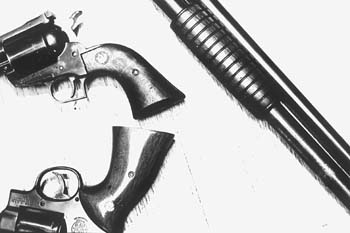
Photos by Robert Scheer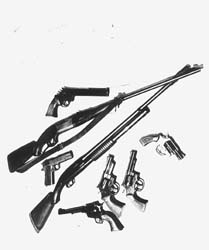 11am, Saturday, Sept. 13
11am, Saturday, Sept. 13
Natural Bridges State Park, Santa Cruz
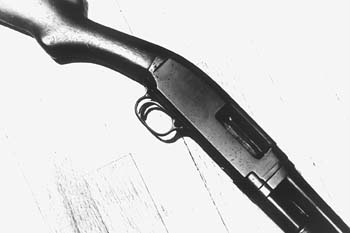
Varni Road, Watsonville
 3pm, Friday, Sept. 19
3pm, Friday, Sept. 19
Near the Esplanade, Rio del Mar
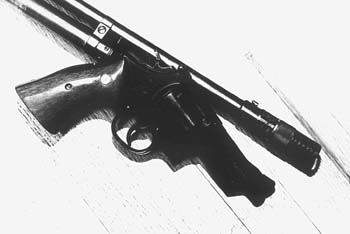
Twin Lakes Park, Santa Cruz
 1am, Saturday, Sept. 27
1am, Saturday, Sept. 27
Airport Boulevard, Watsonville
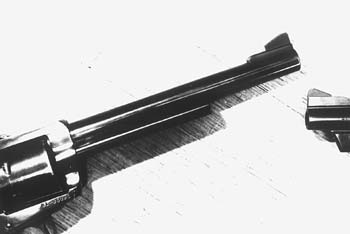
Westside, Santa Cruz
From the Dec. 4-10, 1997 issue of Metro Santa Cruz.
![[MetroActive Features]](/gifs/feat468.gif)